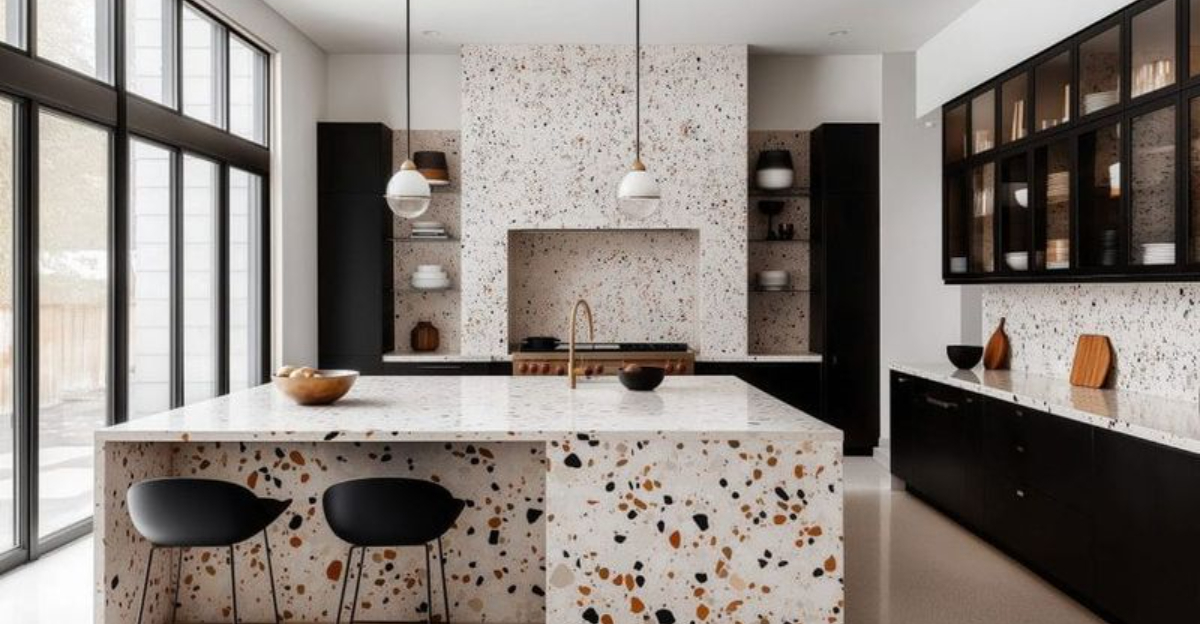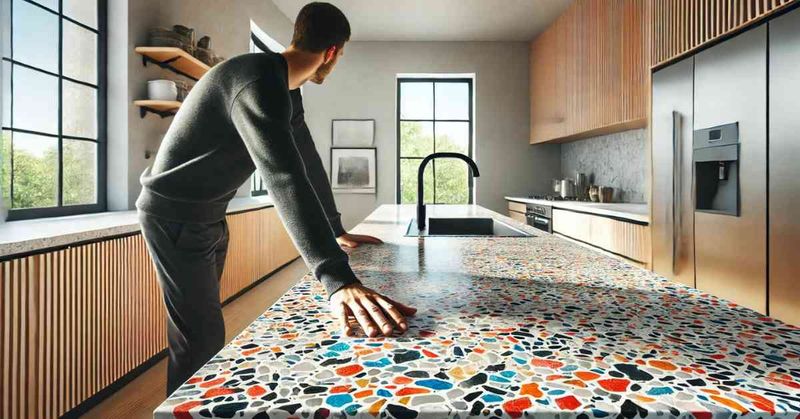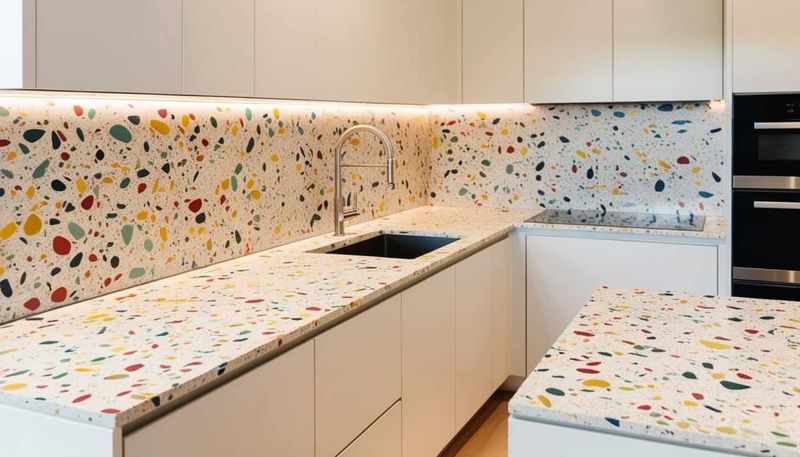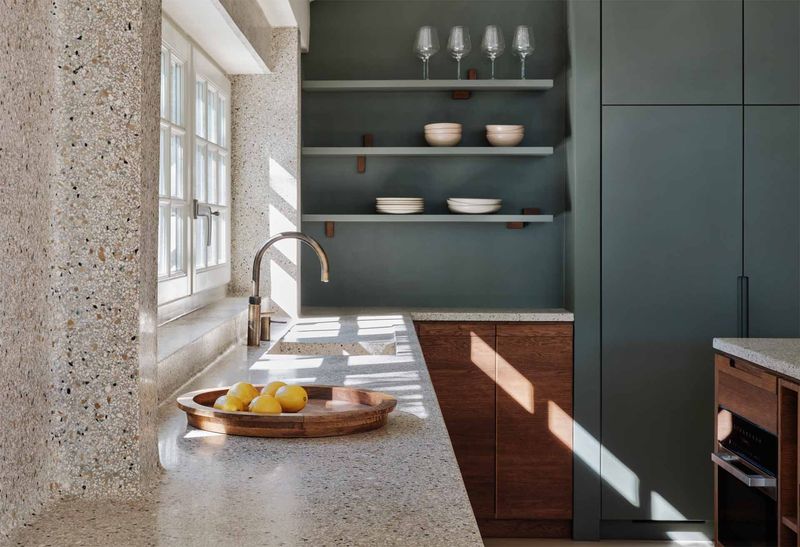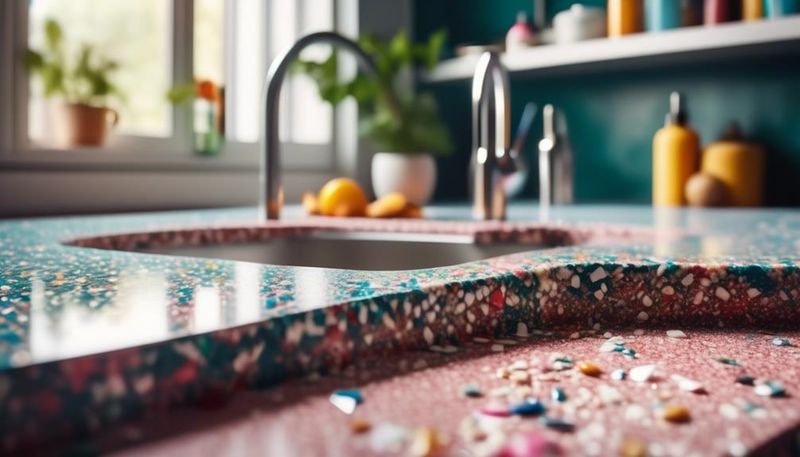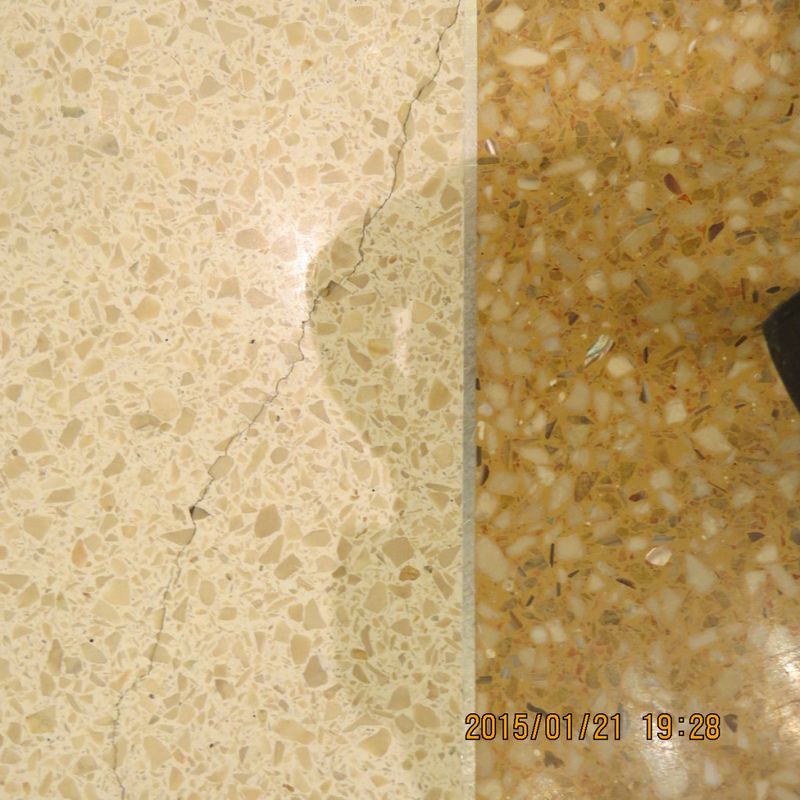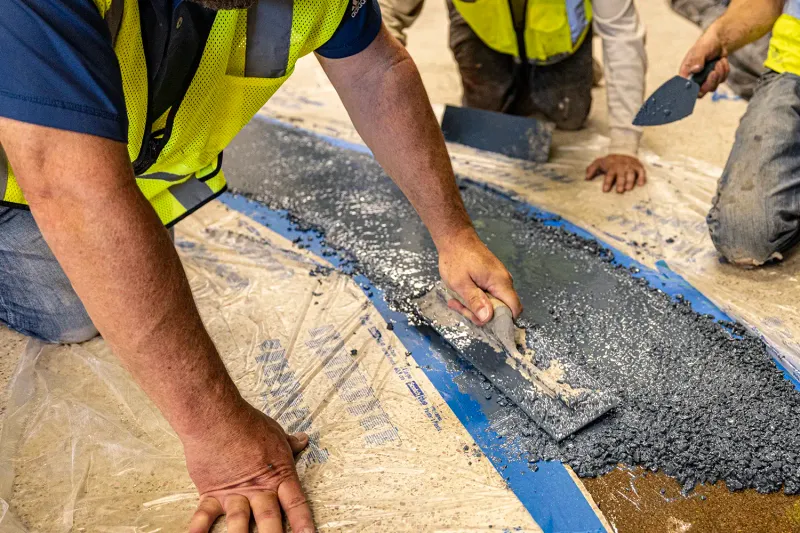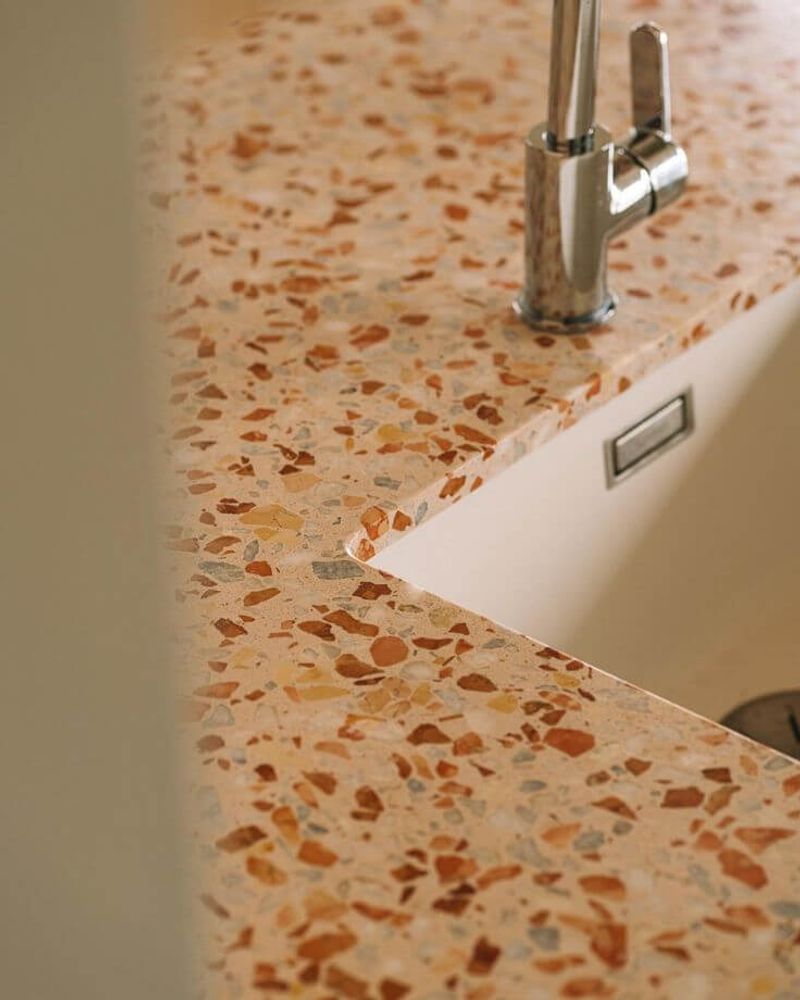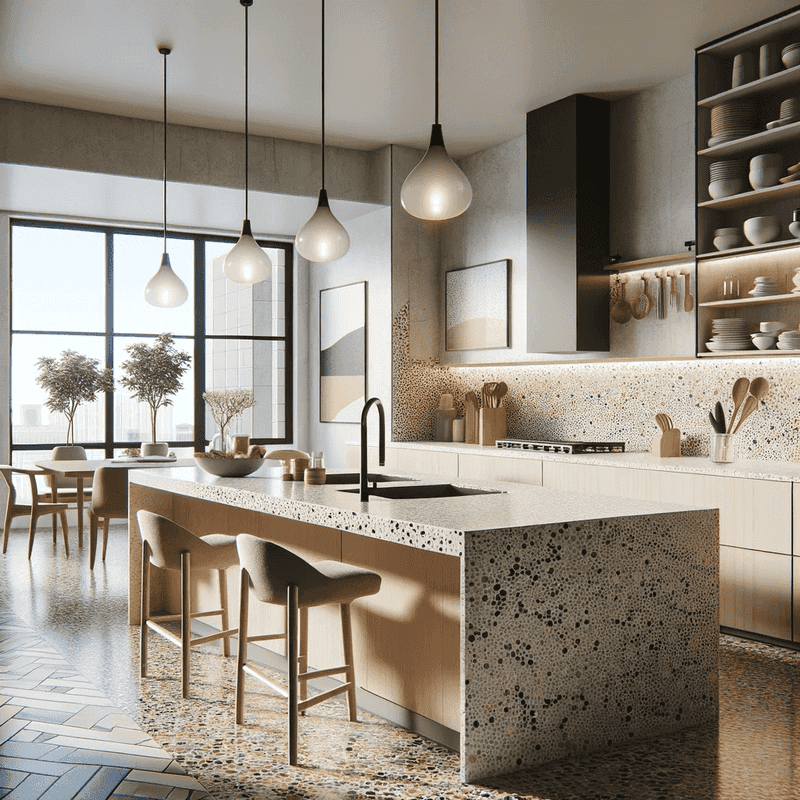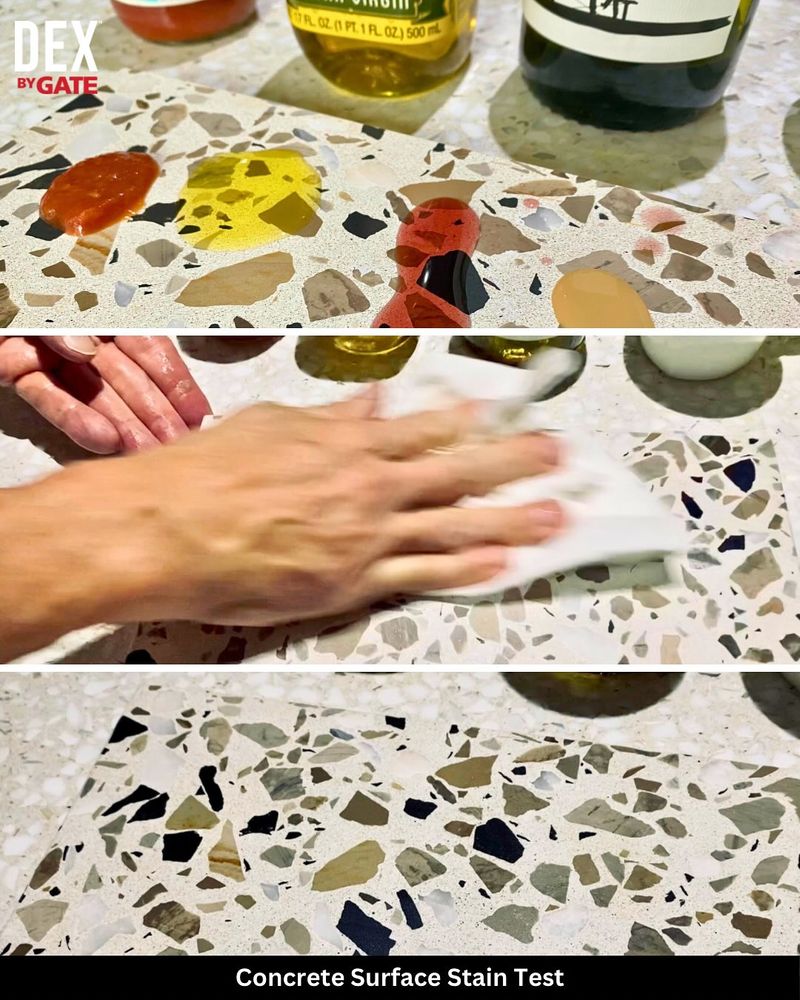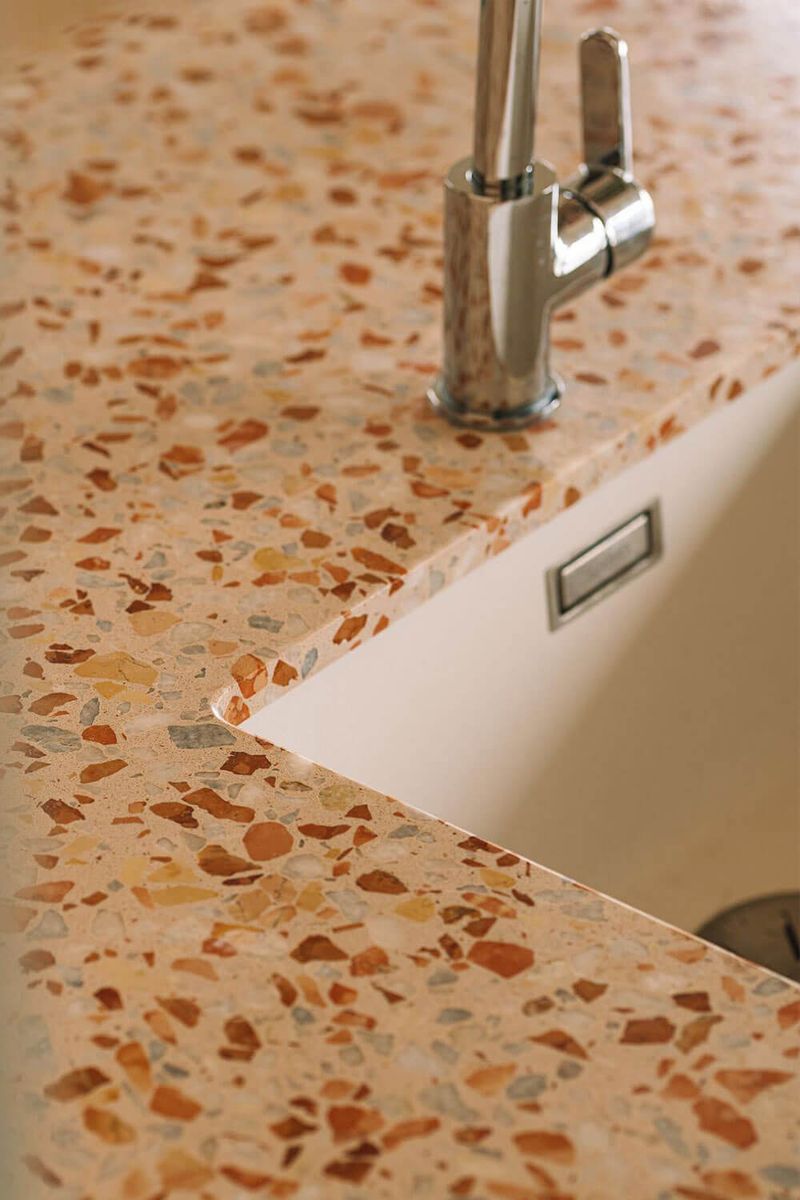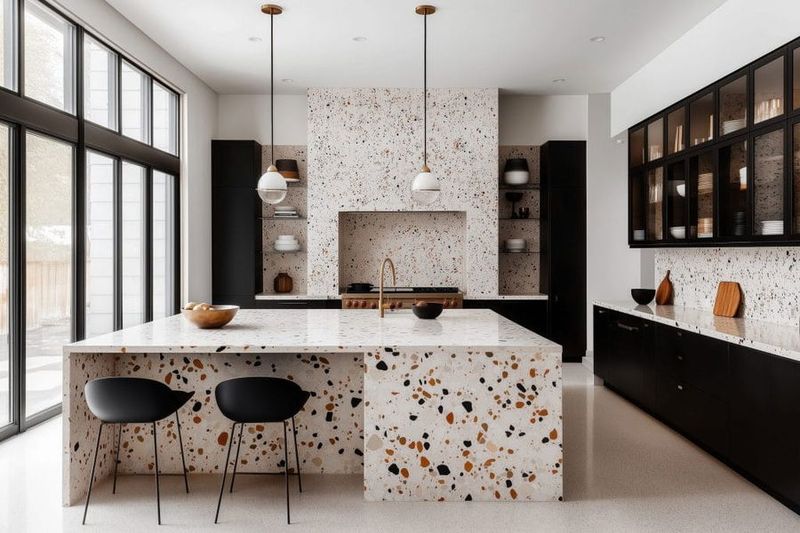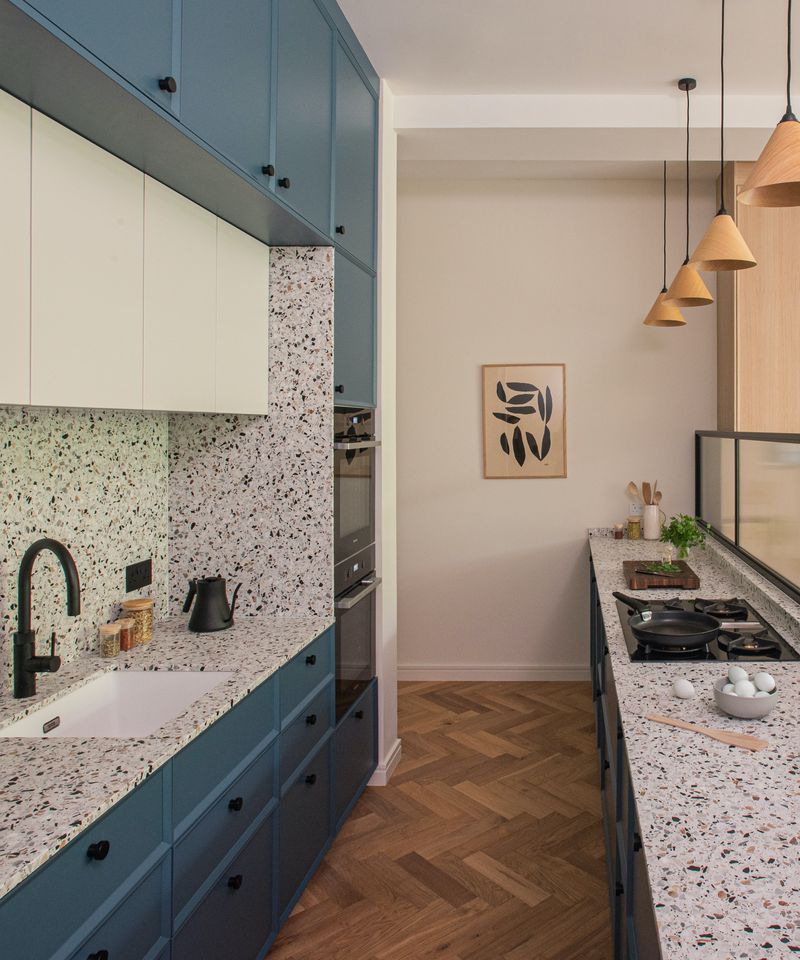Terrazzo doesn’t beg for attention – it earns it. With its distinctive speckled surface and artful mix of materials, this mid-century favorite is stepping confidently back into the kitchen spotlight.
Once a staple of retro design, terrazzo countertops are making a major comeback with a modern twist. Designers are all in, and homeowners are catching on fast.
For those curious about bringing this bold material into their space, here are 18 things to know before terrazzo becomes your next design obsession.
1. The Rich History Behind Terrazzo
Would you believe terrazzo dates back to 15th century Italy? Venetian workers discovered they could create beautiful surfaces by embedding marble scraps in clay.
Over centuries, the technique evolved from simple flooring to today’s sophisticated countertops. The name itself comes from the Italian word for ‘terrace,’ where these early artisans would often work.
2. What Exactly Makes Up Terrazzo?
Imagine a beautiful mosaic of marble, quartz, glass, or even shell fragments suspended in a binding material. That’s the essence of terrazzo!
Modern versions typically use either cement or epoxy resin as the base. The aggregate pieces (those colorful chips) can range from tiny specks to larger chunks, depending on the desired aesthetic.
3. Exceptional Durability For Busy Kitchens
Families with active kitchens, rejoice! When properly installed and maintained, terrazzo countertops can last for decades – sometimes even outliving the kitchen itself.
The incredible strength comes from the combination of natural stone chips and binding material. Many commercial buildings have terrazzo floors that have withstood heavy foot traffic for over 40 years.
4. Eco-Friendly Material Choice
Green-minded homeowners take note! Terrazzo ranks among the most environmentally friendly countertop options available today.
Many terrazzo mixes incorporate recycled materials like post-consumer glass, marble remnants, or concrete. The longevity factor also contributes to its sustainability – fewer replacements mean less waste in landfills over time.
5. Heat Resistance That Cooks Appreciate
Hot pots and pans pose no threat to a properly installed terrazzo surface! Unlike some countertop materials that require constant vigilance around heat sources, terrazzo handles hot items with ease.
The stone aggregate components naturally resist heat damage. However, using trivets still remains good practice to maintain the countertop’s beauty over decades of cooking adventures.
6. Seamless Installation Options
Unlike natural stone slabs that require visible seams, poured-in-place terrazzo offers a completely seamless look across your entire kitchen surface!
This installation method creates one continuous surface regardless of size or shape. For those who dislike interruptions in their countertop design, this seamless quality represents a major advantage over many competing materials.
7. Maintenance Requirements
Contrary to what some might assume, caring for terrazzo isn’t complicated! Regular cleaning with mild soap and water keeps surfaces looking fresh.
Sealing every 1-2 years helps protect against stains in cement-based terrazzo. Epoxy-based versions require even less maintenance. Avoid harsh chemical cleaners that might damage the sealer or epoxy binding.
8. Potential for Hairline Cracks
Here’s something to watch for: cement-based terrazzo can develop hairline cracks if the substrate underneath flexes or shifts.
Professional installation minimizes this risk by ensuring proper substrate preparation. Epoxy-based terrazzo offers greater flexibility and crack resistance than cement-based versions, making it preferable for countertop applications in most modern homes.
9. Professional Installation Is Non-Negotiable
Thinking about a DIY terrazzo project? You might want to reconsider!
The mixing, pouring, and finishing of terrazzo requires specialized equipment and expertise. Professional installers understand the precise ratios needed for durability and beauty. They also know how to properly grind and polish the surface to achieve that signature smooth finish.
10. The Investment Factor
Let’s talk money for a moment. Terrazzo typically costs more upfront than many standard countertop materials like laminate or some granites.
Expect to pay between $50-$100 per square foot installed, depending on your design choices and location. The good news? The exceptional longevity means you’ll likely never need to replace it, making it cost-effective over time.
11. Design Versatility
Few materials complement as many design styles as terrazzo! From mid-century modern to contemporary minimalist to eclectic bohemian, terrazzo adapts beautifully.
The secret lies in customizing the colors and chip sizes to match your aesthetic. Smaller, subtle chips in neutral colors work wonderfully in minimalist spaces, while larger, colorful aggregates make bold statements in more eclectic kitchens.
12. Stain Resistance Capabilities
Worried about that spilled red wine or turmeric? Properly sealed terrazzo offers excellent stain resistance compared to many natural stones.
Epoxy-based terrazzo provides superior stain protection due to its non-porous nature. Cement-based versions require more diligent sealing but still perform admirably against common kitchen culprits when properly maintained.
13. Texture and Visual Interest
Bored with plain, flat surfaces? Terrazzo provides subtle texture and visual depth that plain countertops simply can’t match.
The interplay of different aggregate materials catches light differently throughout the day. This creates a subtly shifting appearance that adds dimension to your kitchen without overwhelming the space or competing with other design elements.
14. Customization Possibilities
Ever dreamed of a truly one-of-a-kind kitchen? Terrazzo offers unparalleled customization options beyond just color choices.
You can specify the exact size, density, and distribution of aggregate chips. Some homeowners incorporate brass or metal divider strips for decorative patterns. Others even embed special items like small fossils or meaningful tokens for a truly personalized surface.
15. Resale Value Considerations
Smart homeowners think about future resale value. Quality terrazzo countertops can positively impact your home’s marketability and value.
As more design-conscious buyers seek unique, durable materials, terrazzo’s appeal continues to grow. The material’s longevity also reassures potential buyers they won’t face immediate replacement costs – a significant selling point in competitive real estate markets.
16. Repairing Damaged Terrazzo
Accidents happen in busy kitchens. Fortunately, terrazzo can be repaired if damage occurs!
Small chips or cracks can be filled with matching material and repolished by professionals. This repairability gives terrazzo an advantage over some engineered materials that require complete replacement when damaged.
17. Terrazzo in Different Kitchen Zones
Beyond just the main countertop, terrazzo works beautifully in multiple kitchen zones! Consider extending it to backsplashes, waterfall edges on islands, or even integrated sinks.
The material’s water resistance makes it suitable for sink surrounds. Some designers create dramatic effects by using contrasting terrazzo formulations in different areas while maintaining a cohesive overall look.
18. Complementary Design Elements
Wondering what pairs well with terrazzo countertops? Simple cabinetry often works best, allowing the terrazzo to shine as the star.
Matte black or brass hardware provides beautiful contrast against the speckled surface. For backsplashes, consider solid colors that pull from the terrazzo’s aggregate chips. Lighting choices matter too – under-cabinet lights beautifully highlight terrazzo’s dimensional qualities.

